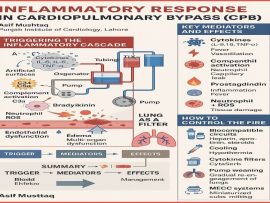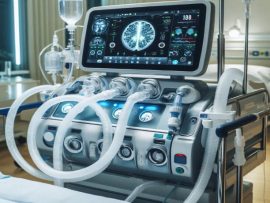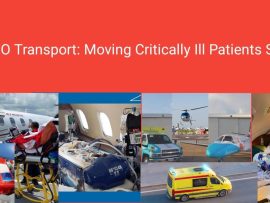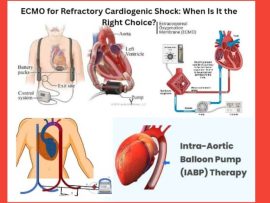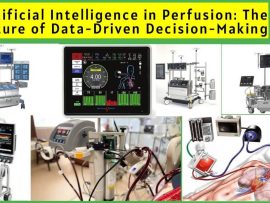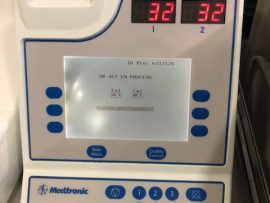Abstract Medical devices used in contact with blood trigger coagulation and activate platelets leading to thrombotic complications. To prevent these effects, systemic anticoagulants and antiplatelet agents are typically prescribed, but..
Read MoreAbstract Objective Hemoconcentration and cell saver use are blood conservation techniques that are often used in cardiac surgery to salvage the patient's own blood to reduce autologous transfusion. The purpose..
Read MoreAbstract Introduction Bleeding and thrombotic complications are common in extracorporeal membrane oxygenation (ECMO) patients and are associated with increased mortality and morbidity. The optimal anticoagulation monitoring protocol in these patients..
Read MoreAbstract Introduction Venoarterial extracorporeal membrane oxygenation (VA-ECMO) is an essential life-support system in critical care specifically engineered to assist cardiac and respiratory function by externally maintaining blood perfusion and oxygenation..
Read MoreAbstract Whether an anticoagulation strategy combining bivalirudin and aspirin during extracorporeal membrane oxygenation (ECMO) would prolong oxygenator use is unknown. No clear data exist on oxygenator life span during prolonged..
Read MoreAbstract Importance Excessive bleeding is a common and prognostically important complication of cardiac surgery. For bleeding related to coagulation factor deficiency, frozen plasma is the most used therapy. Preliminary trials indicate..
Read MoreAbstract: Cardiopulmonary bypass (CPB) induces a multifactorial systemic inflammatory response that significantly contributes to postoperative complications such as acute lung injury, renal dysfunction, and increased morbidity. This response is initiated..
Read MoreAbstract Over 10% of children develop thrombosis after cardiac surgery for congenital heart disease. Children with a single ventricle physiology have the highest risk of thrombosis associated with increased length..
Read MoreCardiopulmonary Bypass (CPB) is one of the most critical advancements in cardiac surgery. It allows the surgical team to operate on a non-beating heart by temporarily taking over the functions..
Read MoreAbstract In massive pulmonary embolism (PE), endovascular therapies and extracorporeal membrane oxygenation (ECMO) are increasingly utilised. However, the impact of combining endovascular therapies with ECMO on shock resolution and clinical recovery remains..
Read MoreAbstract Introduction Thromboelastography (TEG), which indicates hemostatic ability, is useful for monitoring coagulation during extracorporeal circulation (ECC). However, the extent to which TEG levels are independently affected by ECC exposure..
Read MoreIntroduction: A Heart That Pauses, A Circuit That Lives When the heart is arrested during cardiac surgery, life continues—thanks to cardiopulmonary bypass (CPB). The theoretical underpinnings of CPB stem from..
Read MoreAbstract Extracorporeal carbon dioxide removal (ECCO2R) is an emerging technique designed to reduce carbon dioxide (CO2) levels in venous blood while enabling lung-protective ventilation or alleviating the work of breathing...
Read MoreAbstract Rapid hemodynamic stabilization and restoration of pulmonary perfusion are the cornerstones of treatment for high-risk pulmonary embolism (PE). While all current guidelines recommend systemic thrombolysis (SYS) as the first-line..
Read MoreAbstract This case report discusses a rare and critical perfusion accident during a minimally invasive coronary artery bypass grafting (CAGB) procedure, where a Eurosets Skipper oxygenator burst 3 minutes after..
Read MoreIntroduction Extracorporeal Membrane Oxygenation (ECMO) is a life-saving intervention for patients with severe cardiac and respiratory failure. However, the need for specialized ECMO care often necessitates the transport of critically..
Read MoreIntroduction Refractory cardiogenic shock (RCS) is a life-threatening condition where the heart fails to supply adequate blood flow to the body's organs, despite maximal medical therapy. It is a major..
Read MoreAbstract Critically ill patients that require kidney replacement therapy (KRT) are among the most ill and complex patients routinely encountered in the intensive care unit (ICU). Continuous KRT (CKRT) is..
Read MoreIntroduction Artificial Intelligence (AI) is rapidly transforming perfusion, particularly in cardiopulmonary bypass (CPB) and extracorporeal membrane oxygenation (ECMO). By leveraging machine learning (ML) and real-time data analysis, AI enhances decision-making,..
Read MoreIntroduction Extracorporeal Membrane Oxygenation (ECMO) has become a vital intervention in cardiac surgery, offering temporary mechanical support for patients experiencing severe cardiac dysfunction. It stabilizes hemodynamics, allowing time for myocardial..
Read MoreAbstract Purpose Cardiac surgery requiring cardiopulmonary bypass (CPB) is frequently complicated by excessive bleeding because of coagulopathy. Contact of blood with the CPB circuit is a major contributor. While several..
Read MoreAbstract Bleeding is a well-known and severe complication of cardiac surgery. Cardiopulmonary bypass, along with heparinization and hemodilution, is thought to affect all pathways of the hemostatic process, leading to..
Read MoreIntroduction Cardiopulmonary bypass (CPB) is a lifesaving technology in cardiac surgery, but it introduces blood-material interactions that trigger inflammatory and coagulative responses. To address these issues, advancements in biocompatible CPB..
Read MoreAbstract Background Bleeding is a common and sometimes fatal complication of venovenous extracorporeal membrane oxygenation (ECMO). Whether lowering the intensity of anticoagulation during venovenous ECMO is safe or effective is..
Read MoreAbstract The 2021 Adult and Pediatric Anticoagulation Guidelines for patients on extracorporeal membrane oxygenation (ECMO) recommend a target partial thromboplastin time (PTT) between 60 and 85 seconds when unfractionated heparin..
Read MoreAbstract Artificial organs, such as extracorporeal membrane oxygenators, dialyzers, and hemoadsorber cartridges, face persistent challenges related to the flow distribution within the cartridge. This uneven flow distribution leads to clot..
Read MoreAbstract Introduction Lung transplantation has been evolving since its inception in 1963. Over recent years, literature has suggested a shift in the perioperative strategy of mechanical support toward extracorporeal membrane..
Read MoreAbstract Extracorporeal membrane oxygenation (ECMO), the key component of which is a membrane oxygenator, known as the artificial lung, could provide irreplaceable respiratory support for patients with cardiopulmonary failure. The..
Read MoreAbstract Introduction During extracorporeal membrane oxygenation (ECMO) systemic anticoagulation with unfractionated heparin (UFH) is standard-of-care. However, there is uncertainty regarding optimal anticoagulation monitoring strategies. Methods We retrospectively investigated venovenous and..
Read MoreIntroduction Extracorporeal Membrane Oxygenation (ECMO) has revolutionized the management of patients with severe cardiac and respiratory failure. Once considered a last-resort therapy, ECMO is now an integral part of critical..
Read More




